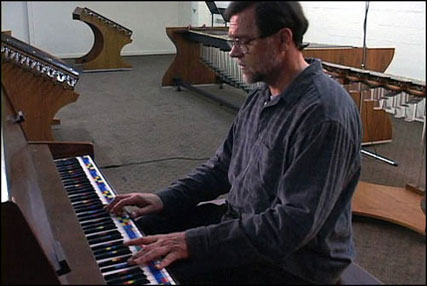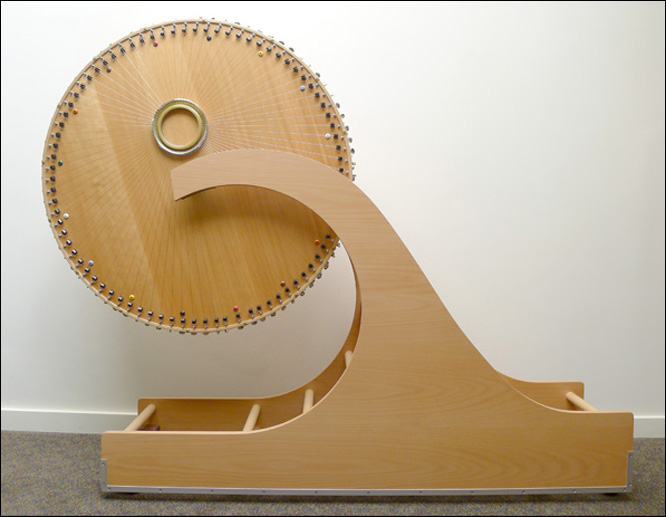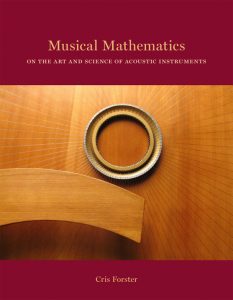 |
| 1948 | Born in Rio de Janeiro, Brazil. | |
| 1954 | Immigrated to Berlin, Germany. | |
| 1958 | Immigrated to New York, New York. | |
| 1961 | Moved to California. | |
| 1966 | Became U.S. citizen. | |
| 1970 | B.A. in history, cum laude, University of California, Santa Cruz. | |
| Climbed four mountains: Alpeskopf, Schellschlicht, Thaneller, and Zugspitze. | ||
| 1972–2022 | 50 years on Mt. Tamalpais and beyond . . . Circumnavigating the globe one hike at a time. I owe everything to the mountains, forests, and wide-open spaces: happiness, stamina, imagination. | |
| ~In memory of Joshua Slocum and his masterpiece, the Spray. | ||
| 1974 | B.A. in music, piano performance, Lone Mountain College, San Francisco. | |
| 1975–2025 | 50th anniversary of living, building, writing, and composing with the variables of acoustic instruments and music. | |
| 1976 | Received a Special Projects Grant from the California Arts Council to compose and perform Song of Myself: Intoned Poems of Walt Whitman for Chrysalis I, Harmonic/Melodic Canon, and Voice. | |
| 1976–1980 | Curator, archivist, and performer for the Harry Partch Foundation. Tuned, repaired, and rebuilt virtually all the Partch instruments; performed as string player and percussionist. In 1980, coordinated and supervised a tour of the Partch instruments to Berlin and Cologne; played Marimba Eroica in Partch’s The Bewitched in Berlin and Cologne; performed Song of Myself: Intoned Poems of Walt Whitman in Berlin. | |
| 1981–1990 | Built and rebuilt original instruments. Established the Chrysalis Foundation in 1982. Wrote compositions; gave public performances throughout California. | |
| 1982–2022 | 40th anniversary of the Chrysalis Foundation: the lifeblood of our creative efforts. My eternal gratitude and thanks to all the participants, supporters, and contributors. | |
| 1991–2000 | Wrote Musical Mathematics: On the Art and Science of Acoustic Instruments. (See Musical Mathematics Pages.) | |
| 2002–2022 | 20th anniversary of our website. | |
| 2001–2025 | From August 2008 to March 2010, copy-edited, indexed, designed, and typeset Musical Mathematics, published in 2010 by Chronicle Books, San Francisco, California. • Since the release of Musical Mathematics, edited 393 pages that include: (1) typographical corrections and typesetting improvements, • Also, for Chapter 2, wrote new Section 2.14 on metric string tension calculations in newtons (N), dynes (dyn), and kilograms-force (kgf). • Improved all the instruments with new or redesigned parts. • Wrote new compositions for Ellis Island/Angel Island: A Vision of the American Immigrants. • Directed Chrysalis Foundation Internship Programs. (See YouTube Just Intonation Music Videos.) • Gave private and public performances. • Modified Diamond Marimba II. • Built Chrysalis II. • Restored Chrysalis I with the original soundboards, support rings, bridges, and the wave-like stand. • Modified the String Winder. • Contributed structural designs for soundproofing the Chrysalis New Music Studio. (See Kickstarter Article.) • (i) Glassdance. Installed (1) silicone liner tubes, (2) machined aluminum glass stem components, and (3) jam nuts. • Rebuilt Diamond Marimba I with the original quarter-sawn pernambuco bars; replaced the six highest bars with Honduras rosewood bars. • Organized the Instrument Construction Archive: 8 three-ring binders, 17 manuals and 1 document, and 64 tools and parts boxes. • Reformatted 83 Chrysalis Foundation webpages with HTML and CSS to optimize mobile phone access. • Performed video recording of Twilight for Just Keys. • Modified Chrysalis I and Chrysalis II. • Modified Harmonic/Melodic Canon. • More improvements on the String Winder, Diamond Marimba II, Chrysalis I, and Chrysalis II. • After 20 years, moved the Chrysalis New Music Studio to a new location. • Remachined Canons and Bass Marimba hardware. • Finished Psithurism for Chrysalis II. • Released new Ambisonance album. • Made several repairs and numerous improvements on shop machine tools. • (ii) Glassdance. For 39 extra brandy snifters, installed (1) machined aluminum glass stem components, and (2) customized Threaded Shaft Collars to replace thirty-nine 10-24 jam nuts. (See Glassdance_ToolsParts.pdf, p. 8.) • Wrote a 43-page booklet for the new Song of Myself: Intoned Poems of Walt Whitman album. • Designed and built a recording space in the downstairs flat. • Machined and installed left string performance markers for Chrysalis II. • Performed video recording of Psithurism for Chrysalis II. • (iii) Glassdance. Installed (1) customized Threaded Shaft Collars to replace forty-eight 10-24 jam nuts, and (2) newly invented Locknuts to replace forty-eight 7/16-14 jam nuts. Also provided new acoustical, mechanical, and electrical components. (See Glassdance_Components_Manual-1.pdf, p. 4, pp. 12–14, 27–28; Glassdance_RightAngleGearmotor-and-Fans_Manual-2.pdf, pp. 6–7.) • Released new Song of Myself album. |
* * * * *

* * * * *
ON THE ART AND SCIENCE OF ACOUSTIC INSTRUMENTS

Buy now at Amazon.com and AbeBooks.com.
* * * * *
1. How Music and Mathematics Relate [PDF]
2. In Defense of Music’s Eternal Nature: On the Pre-eminence of Musica theorica Over Musica practica [PDF]
3. Soittimen kehittäminen kehitysvammaiselle : soitinrakennus erityispedagogiikan kontekstissa [PDF]
4. The Hurrian Pieces, ca. 1350 BCE: Part Two — From Numbered Strings to Tuned Strings [PDF]
5. Music and Dance of the Middle East [PDF]
6. The Ear, Music, and Math [PDF]
7. The search for a microtonal Flute [PDF]
8. Metingen en Analyse van Muziekinstrumenten [PDF]
9. The Haydn and Hummel Trumpet Concertos and Their Similarities [PDF]
10. Acoustic Resonance in Cylindrical Tubes with Side Branches [PDF]
11. Mathematical Modeling of Resonance in an Open-Ended Cylinder [PDF]
12.The Blues Scale [PDF]
13. Mathematics, Music, and the Guitar [PDF]
14. Tópicos Especiais em Luteria [PDF]
15. Curso Superior de Tecnologia em Luteria [PDF]
16. The Development of the Equal Temperament Scale: Evolution or Radical Change? [PDF]
17. The Mathematics, Physics, and Computation of Music [PDF]
18. Discovering the Art of Mathematics: Music [PDF]
19. The Celtic Lyre [PDF]
20. Music in Islamic Spiritual Care: A Review of Classical Sources [PDF]
21. Appraising Timbre: Embodiment and Affect at the Threshold of Music and Noise [PDF]
22. Theoretical Framework for Modeling Ingressive Phonation [PDF]
23. Einführung, Stimmung, und Intonation [PDF]
24. Müzik İşaretlerinde Öznitelik Belirlenmesi… [PDF]
25. Ancient Strings: Alapini Vina [PDF]
26. Music of India – a brief outline – Part sixteen [PDF]
27. In Search of the Colascione or Neapolitan Tiorba. – a Missing Link? [PDF]
28. Quantitative Analysis of Guitar Harmonic Character [PDF]
29. El pensamiento religioso en la música de Arnold Schönberg [PDF]
30. Matematica e Musicologia: la costruzione dei temperamenti [PDF]
31. Authority, Critique, and Revision in the Sanskrit Music-Theoretic Tradition: Rereading the Svara-mela-kalānidhi [PDF]
32. On The Performance of Segment Averaging of Discrete Cosine Transform Coefficients on Musical Instruments Tone Recognition [PDF]
33. Creative Musical Instrument Design [PDF]
34. The Geometry of Musical Logarithms [PDF]
35. Raga (Melodic Mode) [PDF]
36. The Birl Physical Model [PDF]
37. Komposisi “Jangkah” Klonthong Laras Pelog [PDF]
38. Natya Shastra [PDF]
39. The Oud Across Arabic Culture [PDF]
40. Vocal similarity predicts the relative attraction of musical chords [PDF]
41. Música y Matemáticas: Conexiones Entre Sonidos y Números [PDF]
42. The Foundations of Harmonic Tensions [PDF]
43. Music Across Times and Fences [PDF]
44. Physics of Musical Instrument (woodwind instrument) [PDF] | (Includes some Korean texts.)
45. Islamic Civilisation Primer Series [PDF] | (Includes some Arabic texts.)
46. The Microtones of Bharata’s Natyashastra [PDF]
47. The Relentless Pursuit of Tone: Timbre in Popular Music [PDF]
48. Müzikte Yeni Doğuşkan Arayişi Konusunda El-Jurjani’nin 1,000 Yillik İşaret İşleme Probleminin Nihayi Çözümü [PDF]
(1) The author acknowledges the existence of Max F. Meyer’s original tonality diamond, published in 1929.
49. El-Kindî’nin Ud Perde Değerlerinin Gitara Uygulanmasi Ve Enis Gümüş’ün “El-Kindî” Eserinin Analizi [PDF]
50. Experimenting with woodwind instruments [PDF]
51. Síntesis de Sonido Digital de un Instrumento de Viento Usando el Método de la Transformación del Funcional [PDF]
52. Foundations In Music Psychology: Theory and Research [PDF]
53. Η Εξέλιξη των Μουσικών Συστημάτων: Μια Διδακτική Ιστορικο–Μαθηματική Προσέγγιση σε Μαθητές της Γ΄ Γυμνασίου του Μουσικού Σχολείου [PDF]
54. Microtonality and the Struggle for Fretlessness in the Digital Age [PDF]
55. Workshop Pembuatan Instrumen Dan Penyusunan Musik Bambuuntuk Peserta “Festival Swara Deling 2015” Di Surakarta [PDF]
56. Avanti Dilettanti– Lasst das Cello ertönen! [PDF]
57. تاريخ علوم الموسيقى عند العرب وعند العجم [PDF]
The History of Music Sciences Among Arabs and the Persians [PDF]
English machine translation site.
58. Music as Biology [PDF]
59. Neoplatonism and Musical Structure in the ʿAbbāsid Caliphate, Baghdad 750 – 1000 CE [PDF]
See Musical Mathematics, p. 639, Figure 11.48.
60. Musik Tiup Barat (Brass Band) Dalam Sajian Gending Gati [PDF]
61. エンハルモニウムに適用された音律 ─ 田中正平の「純正調」を読み解く [PDF]
62. Playing with Tuning in bitKlavier [PDF]
63. Ratiology and a Complementary Class of Metrics for Cardiovascular Investigations [PDF]
64. Tuning effect of flute tone hole cavities [PDF]
65. The M (Maqam/Makam – Mode) App [PDF]
66. Müzikte Sihirli Sayılar – 5, 2 ve 3’ün komşu tellerdeki akrabaları [PDF]
67. Surprising Connections in Extended Just Intonation: Investigations and reflections on tonal change [PDF]
(2) The author acknowledges the existence of Max F. Meyer’s original tonality diamond, published in 1929.
68. Tackling Cultural Biases [PDF]
See Musical Mathematics, p. 639, Figure 11.48.
69. Large String Array [PDF]
70. VI. Uluslararasi Hisarli Ahmet Sempozyumu [PDF]
71. 플루트에서 제대로 소리가 나고 있으신지요?
Is the Flute Sounding Properly? [PDF]
72. Music Theorism in the Ancient World [PDF]
73. Scaling, Mirror Symmetries and Musical Consonances Among the Distances of the Planets of the Solar System [PDF]
74. The webpage, https://isartum.net/leimma, includes eight tuning systems translated and analyzed in Musical Mathematics. [PDF]
Regarding the three Greek genera, Musical Mathematics, p. 292, Figure 10.3, illustrates the distributions of tetrachords and tones in the context of Euclid’s Greater Perfect System. And p. 664, Figure 11.58, shows these distributions in the context of Al-Farabi’s Perfect Invariable Disjunct System.
75. Constraints on hydraulic properties from free pressure oscillations recorded during pumping operations in boreholes [PDF]
76. Reply to Goffinet: In consonance, old ideas die hard [PDF]
77. Five Companies Crushing It With PCT Mathcad [PDF]
On p. 2, the author describes a user-defined unit of mass. In the context of designing and building unique — non-mass-produced — acoustic instruments in the United States, Musical Mathematics, Chapter 1, discusses this subject in full detail.
78. Flauta travesera y manipulación de ondas [PDF]
79. Kinetic Musical Sculpture [PDF]
See Musical Mathematics, pp. 788–790, 845, 857. Also, see Chrysalis I and Chrysalis II.
80. Análisis del Desarrollo de Proyectos de Aula Utilizando el Software Mathcad [PDF]
81. Penerapan Jangkah Laras Pelog Terhadap Klonthong [PDF]
82. Implementation of Rasa and Bhava as Mentioned in Bharatmuni’s Natyashastra in One of the Classical Dance Forms “Kathakali” [PDF]
83. Plain String Calculations [PDF]
See Musical Mathematics, Chapter 2.
84. Relative Intonation: Non-Symmetrical Implications of Linear and Logarithmic Intervallic Measurement [PDF]
(3) The author acknowledges the existence of Max F. Meyer’s original tonality diamond, published in 1929.
85. LabVIEW Simulation of a Flute Wind Musical Instrument [PDF]
86. Critical Edition of Samgitasara: An Unpublished Work on Indian Music [PDF]
87. Možnosti aplikace matematických znalostí v kontextu praktického provozování hudby [PDF]
88. Modeling and Measuring of the Oriental Musical Scale [PDF]
89. Holographic Composition Technique: Revisiting the Medieval Treatises on Iranian Music [PDF]
90. No Citations: Three Plagiarists of ‘Ambisonance’ at Xenharmonic Wiki [PDF]
91. Analogion Forums: “Musical Mathematics” by Cristiano M.L. Forster [PDF]
92. Microtonal Guitar Method Vol. I [PDF]
93. Физика и Aнатомия Mузыки [PDF]
Writings on Cris Forster
• Editors. “Cris Forster.” In Für Augen und Ohren, Magazine of the Berlin Music Festival. January–February, 1980, pp. 16–17. Dr. Ulrich Eckhardt, Publisher. Berlin, Germany.
• Mahlke, S. “Barde mit zwei Saitenspielen.” Der Tagesspiegel. January 25, 1980. Berlin, Germany.
• Garr, D. “The Endless Scale.” Omni. March, 1981, p. 48. New York, New York.
• McDonald, R. “Cris Forster: Making Music.” San Diego Magazine. September, 1982, pp. 136–139, 198, 228. San Diego, California.
• Fleischer, D. “Sounds of Infinity.” Connoisseur. August, 1983, pp. 102, 105. New York, New York.
• Levine, J. “Expanded Musical Palette Is Inventor’s Note-able Goal.” The Tribune. September 6, 1983. San Diego, California.
• Brewster, T. “A Medley of New Instruments: A Wheel Like the Wind.” Life Magazine. November, 1983, p. 142. New York, New York.
• Editors. “Klingen wie der Wind.” Stern. January, 1984, pp. 146–148. Hamburg, Germany.
• Davies, H. (1984). “Microtonal Instruments,” pp. 656–657. In The New Grove Dictionary of Musical Instruments, Volume 2, S. Sadie, Editor. Macmillan Press Limited, London, England.
• Drye, S.L. (1984). The History and Development of the Musical Glasses, pp. 46–49. Master’s thesis, North Texas State University.
• Arnautoff, V. “Hill Musician Composes, Builds Own Instruments.” The Potrero View. November, 1985, p. 5. San Francisco, California.
• Editors. “This Californian and His Bearings Are Making Beautiful Music Together.” Precisionist: A Publication of the Torrington Company. Summer, 1987, pp. 14–15. Torrington, Connecticut.
• Bowen, C. “Making Music from Scratch.” Métier. Fall, 1987, p. 7. San Francisco, California.
• Snider, J. “Chrysalis: A Transformation in Music.” Magical Blend. April, 1989, pp. 98–102. San Francisco, California.
• Hopkin, B. “Review.” Experimental Musical Instruments V, No. 6. April, 1990, p. 4. Nicasio, California.
• Editors. “Forster, Cris.” PITCH for the International Microtonalist I, No. 4, Spring 1990, p. 142. Johnny Reinhard, Editor. New York, New York.
• Canright, D. “Performance: Concert in Celebration of the Chrysalis New Music Studio — Instruments and Music by Cris Forster.” 1/1, the Journal of the Just Intonation Network 11, No. 4. Spring, 2004, pp. 19–20. San Francisco, California.
• Kaliss, J. “Cris Forster’s ‘Just’ Musical Menagerie.” San Francisco Classical Voice. July 23, 2013. San Francisco, California. (See San Francisco Classical Voice Article.)
• Spaulding, B. “How Math Is Helping One Man Push the Boundaries of Acoustic Music.” PTC Product Lifecycle Report. January 4, 2016. Needham, Massachusetts. (See PTC Mathcad Article.)
• Forster, H. “Support the Evolution of Acoustic Music.” Kickstarter Project. November 29, 2016–January 15, 2017. Brooklyn, New York. (See Kickstarter Article.)
Videos on Cris Forster
• Gaikowski, R., Videographer and Editor (1988). Musical Wood, Steel, and Glass: A video featuring Cris Forster, composer, musician, inventor. A One Way Films/Videos Production, San Francisco, California.
• Noyes, E., Videographer and Editor; Forster, H., Producer and Writer (2006). A Voyage in Music: A retrospective of Cris Forster’s work over the past thirty years. An Alligator Planet Production, San Francisco, California.
• Video performances of solo and ensemble compositions by Cris Forster at the Chrysalis New Music Studio. (See https://www.youtube.com/user/CrisForster/feed.)
• Thomas, R., Videographer and Editor; Forster, H., Writer (2016). Support the Evolution of Acoustic Music. A Sponsored Films Production, San Francisco, California.
Articles by Cris Forster
• “Chrysalis.” Interval: A Microtonal Newsletter. Spring 1978, pp. 6–8. Jonathan Glasier, Editor. San Diego, California.
• “Harmonic/Melodic Canon.” Interval: A Microtonal Newsletter. Fall, 1978, pp. 17–19. Jonathan Glasier, Editor. San Diego, California.
• “Introduction to Everything; Chrysalis; Harmonic/Melodic Canon; Diamond Marimba; Diamond Marimba Score: Ascent of the Phoenix.” Xenharmonikon 7+8, Vol. 4, Nos. 1+2, Spring, 1979, pp. 1–20. Dr. John H. Chalmers, Editor.
• “Song of Myself: Intoned Poems of Walt Whitman.” Interval: A Microtonal Newsletter. Spring/Summer 1979, p. 44. Jonathan Glasier, Editor. San Diego, California.
• “Conversion Analysis: Ratios to Cents.” Interval: A Microtonal Newsletter. Winter 1979, p. 5. Jonathan Glasier, Editor. San Diego, California.
• “Diamond Marimba.” Interval: A Microtonal Newsletter. Winter 1979, pp. 16–18. Jonathan Glasier, Editor. San Diego, California.
• “Harry Partch: Ein Bildnis,” (“Harry Partch: A Portrait”). In Für Augen und Ohren, Magazine of the Berlin Music Festival. January–February, 1980, pp. 10–13. Dr. Ulrich Eckhardt, Publisher. Berlin, Germany.
• “When the Music’s Over.” Omni. May, 1981, p. 14. New York, New York.
• Reflections on building, tuning, and persevering; and on “Song of Myself: Intoned Poems of Walt Whitman.” In Sonic Art, Catalog of The Art Gallery at California State College, San Bernardino. February–March, 1982, pp. 12–13. Marlin Halverson, Editor. San Bernardino, California.
• Descriptions of five original acoustic instruments; and of the Chrysalis Foundation. In Making Music, Catalog of the California Crafts Museum. February–April, 1987. Bill Mellentin, Editor. San Francisco, California.
• “Plain String Calculations.” Experimental Musical Instruments V, No. 6, April 1990, pp. 10–11. Bart Hopkin, Editor. Nicasio, California.
• “On the physics of musical glasses and marimba bars.” Experimental Musical Instruments VI, No. 3, October 1990. pp. 4–5. Bart Hopkin, Editor. Nicasio, California.
• “Wound String Calculations.” Experimental Musical Instruments VI, No. 3, October 1990. pp. 14–17. Bart Hopkin, Editor. Nicasio, California.
• The Partch Hoax Doctrines. Online article, pp. 1–24. The Chrysalis Foundation, San Francisco, California, 2015.